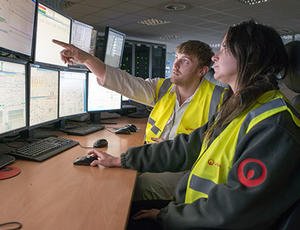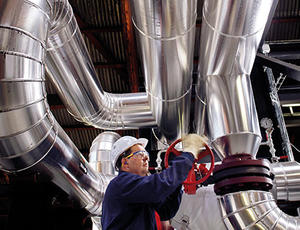Our Energy Recovery Facility (ERF) generates green energy for Birmingham
In 1996 Veolia built a state-of-the-art Energy Recovery Facility (ERF) in Tyseley, just to the east of Birmingham City Centre, which takes 350,000 tonnes of Birmingham’s rubbish each year and converts it into electricity.
The ERF facility was built to comply with strict European emissions standards that came into force in 1996. The facility was specifically designed to treat waste that cannot be re-used, recycled or composted and was built with a capacity much lower than the total waste generated in the city. This is to ensure that recycling initiatives are not compromised.
The ERF has become a landmark building in Birmingham with its bold architecture and an award-winning lighting scheme that illuminates the plant to its full advantage during the hours of darkness.
How the ERF operates
The ERF operates 24 hours a day for 365 days a year (except for planned shutdowns for maintenance) and operates well within the UK and EU standards for emissions to atmosphere. It is a two-stream plant with each boiler designed to process 23.5 tonnes of rubbish per hour. It has a turbo-generator which exports 25MW to the National Grid, after providing for on-site needs. Veolia ES Birmingham has a Non-Fossil Fuel Obligation (NFFO) contract, under a government scheme to support renewable energy. A large proportion of this financial benefit passes to the City Council. The ERF also recovers several thousand tonnes a year of ferrous metals for recycling from the process.
Incinerator Bottom Ash (IBA) is the non-hazardous ash material that is produced from the incineration process. This material is reprocessed by extracting further ferrous and non-ferrous metals and by crushing, tromelling and screening to produce a graded, quality material that is useable as substitute aggregate in such applications as road building. All of the IBA produced from Tyseley is recycled in this way.
Air Pollution Control (APC) Residues or Fly Ash is the only hazardous waste that is produced from the whole process and is the equivalent of just 2% of the inputs. This waste, which is strongly alkaline, is transported in sealed powder-tankers and used to neutralise acidic wastes to produce a neutral filter-cake material.




